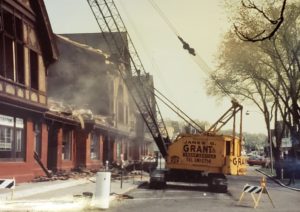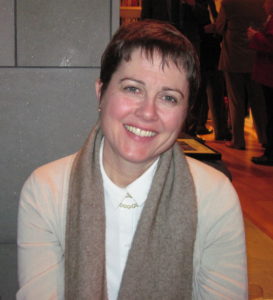
By Sharon Vanderslice
In the late summer of 1999, a dozen or so Belmont residents met in Town Meeting member Sue Bass’s dining room on Concord Avenue to discuss ways to increase transparency in our local government and protect the small-town atmosphere that had drawn us to Belmont in the first place.
We had just lost a battle to keep out a massive development proposed by Partners Healthcare on the campus of McLean Hospital. This forward-thinking psychiatric institution was originally designed to offer patients a calm, nature-based space in which to heal. With the advent of pharmaceutical treatments, McLean’s board decided that these pristine grounds, chosen by landscape architect Frederick Law Olmsted, were superfluous and could be sold at a profit. After intense lobbying of the town’s elected officials, they entered into an agreement that altered the zoning of the entire property to allow for extensive commercial and residential development.
How would this impact Belmont? We wanted people to know.
This was the impetus for the Belmont Citizens Forum Newsletter, first published in January 2000. We committed to writing in-depth articles on public hearings, zoning proposals, and other issues affecting the fabric of the community, especially the preservation of our character-defining historic buildings.
Belmont has a sad history of razing some of its architectural jewels, including the former Cushing Estate (for which the town was named) in 1929, and the half-timbered Tudor-style Olive Block in Belmont Center, on the site of what is now the People’s United Bank, in 1968. It also has suffered the loss of a string of distinctive school buildings to fire. We wanted to do what we could to help preserve the town’s remaining historic properties.
First on the docket was the so-called Town Hall Annex. The name conjures up images of a temporary modular building, but it was in fact designed in the Queen Anne style in 1898 as the town’s second high school, named for its architect, Eleazar B. Homer, and served as the site for critical town offices from 1935 onward. Among its notable features are its intricate ornamental brickwork, its steeply pitched slate roof, and its iron, copper, limestone, and granite detailing which, according to Belmont historic landscape architect Arleyn A. Levee, the town could never afford to pay for today.
In 1995, the Annex became the basis of a lawsuit by a Belmont resident who argued that it did not comply with the Americans With Disabilities Act and needed to be renovated. A town committee to study options initially recommended tearing down the entire edifice and replacing it with a three-story, flat-roofed modern office complex. Following heroic efforts by the Belmont Historic District Commission and two articles in the Belmont Citizens Forum Newsletter, the town elders voted to preserve and restore the original building while providing universal access. As a bonus, the unused third-floor former assembly hall was opened as a community art gallery.
Next up were the town’s three fire stations. After decades of neglect, they clearly needed to be replaced. In the November 2001 Belmont Citizens Forum Newsletter, we advocated for the construction of new stations that would accommodate all necessary fire equipment in strategic locations, provide proper facilities for overnight stays by firefighters, and preserve the original three stations for other community uses. These three buildings were subsequently converted into:
- a private residence on Fairview Avenue,
- a six-unit condominium building that conserved and upgraded the historic exterior and cupola of the former 1873 Waverley schoolhouse, and
- a historically sensitive commercial building in Belmont Center that now houses a regionally famous restaurant, a Pilates studio, and smaller offices while faithfully maintaining the exterior and the original hose tower and fire pole.
In 2008, we ran an article advocating the adoption of Belmont’s so-called “barn bylaw,” which would permit homeowners to convert historically significant accessory buildings (barns, garages, carriage houses, and the like constructed before 1921) into accessory dwelling spaces and thereby stave off their destruction. This bylaw was approved by Town Meeting in 2009 and has been successfully applied several times since.
In 2010, we supported the passage of the Community Preservation Act (CPA), which among other things would provide state and local revenue for historic preservation projects. After a close—but successful—town-wide vote, CPA funds have become a lifeline for properties seriously in need of maintenance. Most recently, they have paid to restore the facade of our Georgian Revival police station, the 1889 tower clock in the First Church, the cupola atop the Belmont Woman’s Club, and the roof of the Wellington Station.
Despite our advocacy, the town lost a truly historic gem, the 1760 Thomas Clark House, in 2014. Local tradition maintains that the Clark family witnessed the beginning of America’s War for Independence from the hill behind the house, seeing smoke and hearing the sounds of war breaking out on April 19, 1775.
In 2015, the Belmont Citizens Forum helped pay for the cleaning and restoration of the former Boston and Maine granite railway bridge in Belmont Center, which had not been cleaned since it was built in 1907, when the existing at-grade crossing was determined to be too dangerous. This project was made possible in large part by private donations to BCF, along with professional support from town contractors.
In 2017, we advocated for the renewal of Belmont’s demolition delay bylaw, which applies to 181 historically significant buildings and, in 2018, the establishment of neighborhood conservation districts.
Other noteworthy projects are on the horizon: the restoration and re-use of the former McLean Barn on Mill Street, continuing advocacy for sidewalk-friendly commercial development in keeping with the old Belmont buildings in Cushing and Waverley Squares, and the refurbishing and reuse of the 1934 Colonial Revival Municipal Light Building on Concord Avenue.
Sharon Vanderslice is the founding editor of the Belmont Citizens Forum Newsletter





Sorry, the comment form is closed at this time.